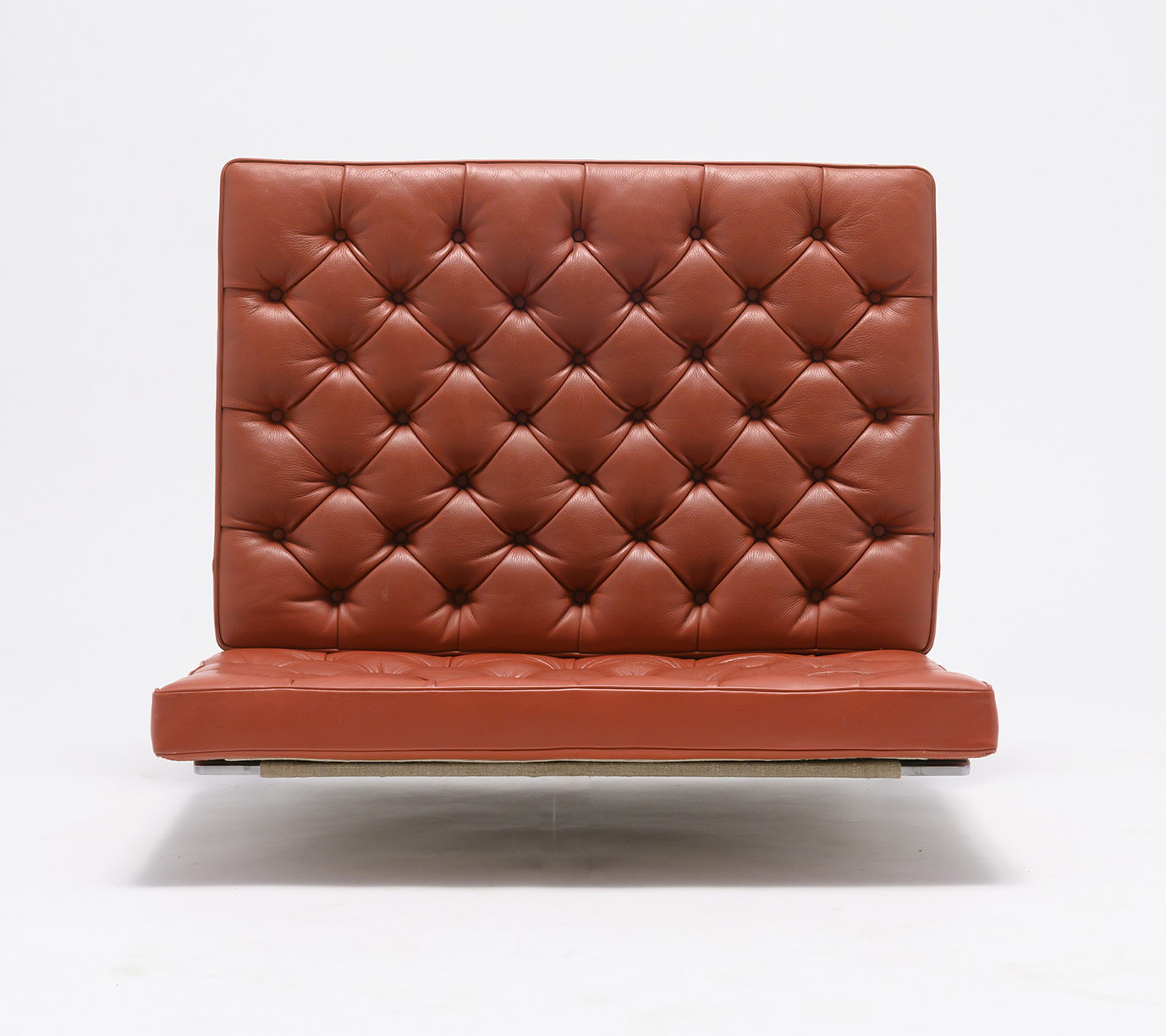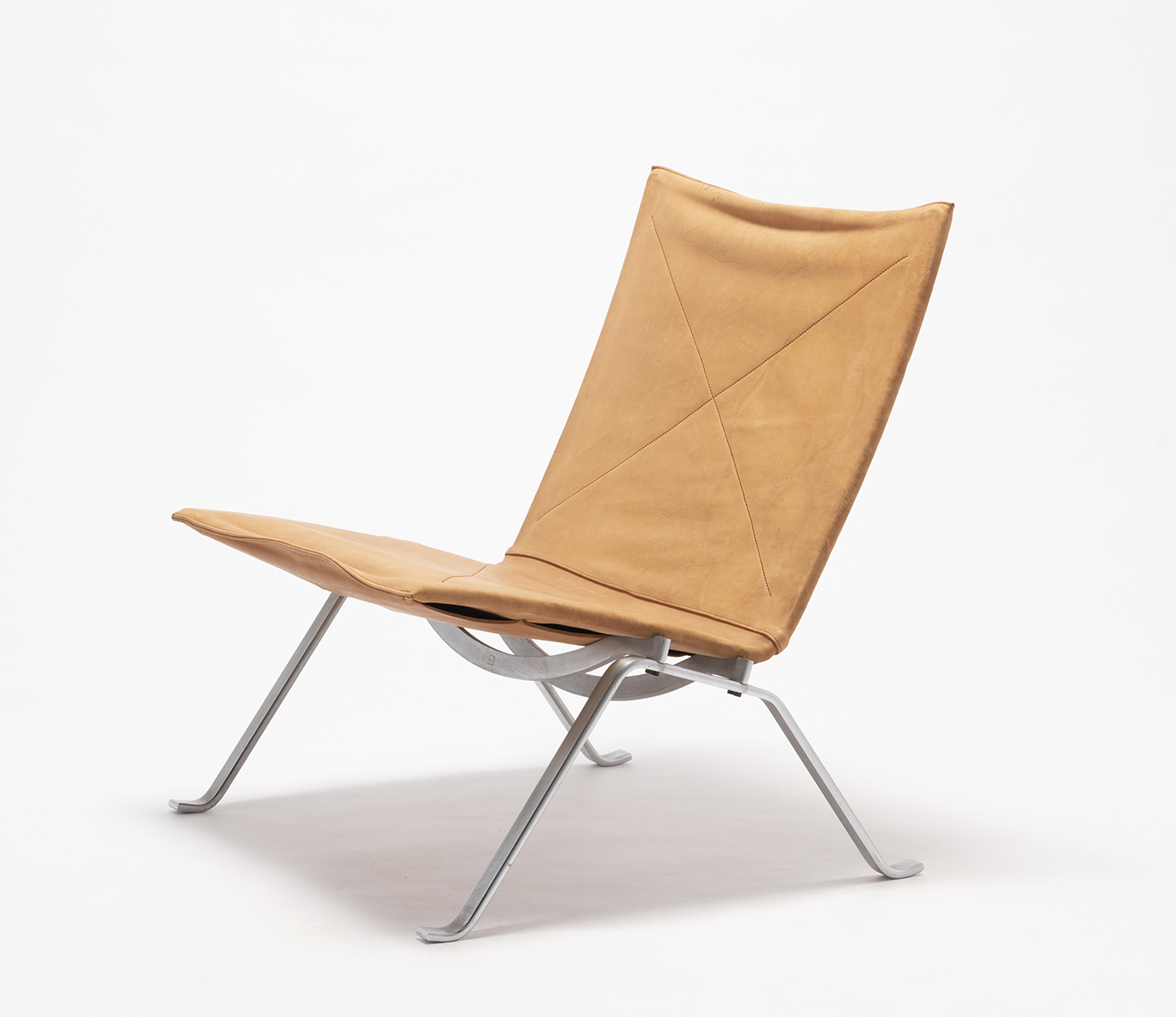POUL KJÆRHOLM: TIMELESS MINIMALISM
HAPPENINGText: Alma Reyes
After Kjærholm’s graduation in 1952, he became an assistant and lecturer at the Academy’s Furniture School, and finally a professor in 1976 until his death four years hence. During this time, he produced an extensive range of furniture, which were mostly manufactured and marketed by Ejvind Kold Christensen. Photographs of their lifetime collaboration and close relationship are displayed, together with study drawings, and other images by photographer Keld Helmer-Petersen who also played a crucial role in Kjærholm’s career. We are also introduced to architect Hanne Dam, Kjærholm’s wife whom he met at the Academy. Photos of their home in Rungsted designed by Hanne reveal Japanese traditional influences, such as their terrace with a moon-viewing platform and geta and zori sandals in their bedroom.

Poul Kjærholm, PK 24, 1965, Oda Collection (Higashikawa), Photo: Yukinori Otsuka
In the same room, we spot the PK 24 chaise lounge (1965), made of mirror-finished stainless steel frame, base, and bar with cane and leather cushion. The long, curved seat is adjustable, and expresses a supple line complementing Kjarholm’s philosophy of anatomical comfort and aesthetic functionality through precision of dimensions and shape. It is said that the hammock chair ‘s form took inspiration from the 1933 deck chair created by Denmark’s leading furniture designer in the golden age, Kaare Klint, as well as the 1928 B-306 chaise by Le Corbusier, Pierre Jeanneret, and Charlotte Perriand.

Poul Kjærholm, PK 26, 1956, Oda Collection (Higashikawa), Photo: Yukinori Otsuka
The main hall in profound black background stages a full array of Kjærholm’s furniture mainly from the Oda Collection. We witness his other essential philosophy of defining the essence and efficiency of the furniture’s form by the materials and manufacturing techniques. This is seen in the striking red leather-cushioned and suspended PK 26 (1956). The wide-seated chair is made of matt, chromo-plated spring steel with canvas webbing. The chair is mounted on the wall by steel legs attached on the back. The steel flat bars extend backward from under the seat, and achieve perfect balance. The chair appears to float in space when viewed from the front, a technique Kjærholm performed to prove that furniture is a structural component of architecture.

Poul Kjærholm, PK 22, 1956, Oda Collection (Higashikawa), Photo: Yukinori Otsuka
Another notable piece is the lounge chair PK 22 (1956), which won the Grand Prix at the 11th Milan Triennale in 1957. Kjærholm eliminated the steel on the sides, and instead, strengthened the space between the legs under the seat. The legs are constructed from a single piece of spring steel, and the back, with minimal steel framework, is covered with leather. The creation is reminiscent of Mies Van Der Rohe’s Barcelona chair, except for the lightness of the leather seat and back, allowing the seat to be raised up in a floating impression.
Read more ...





